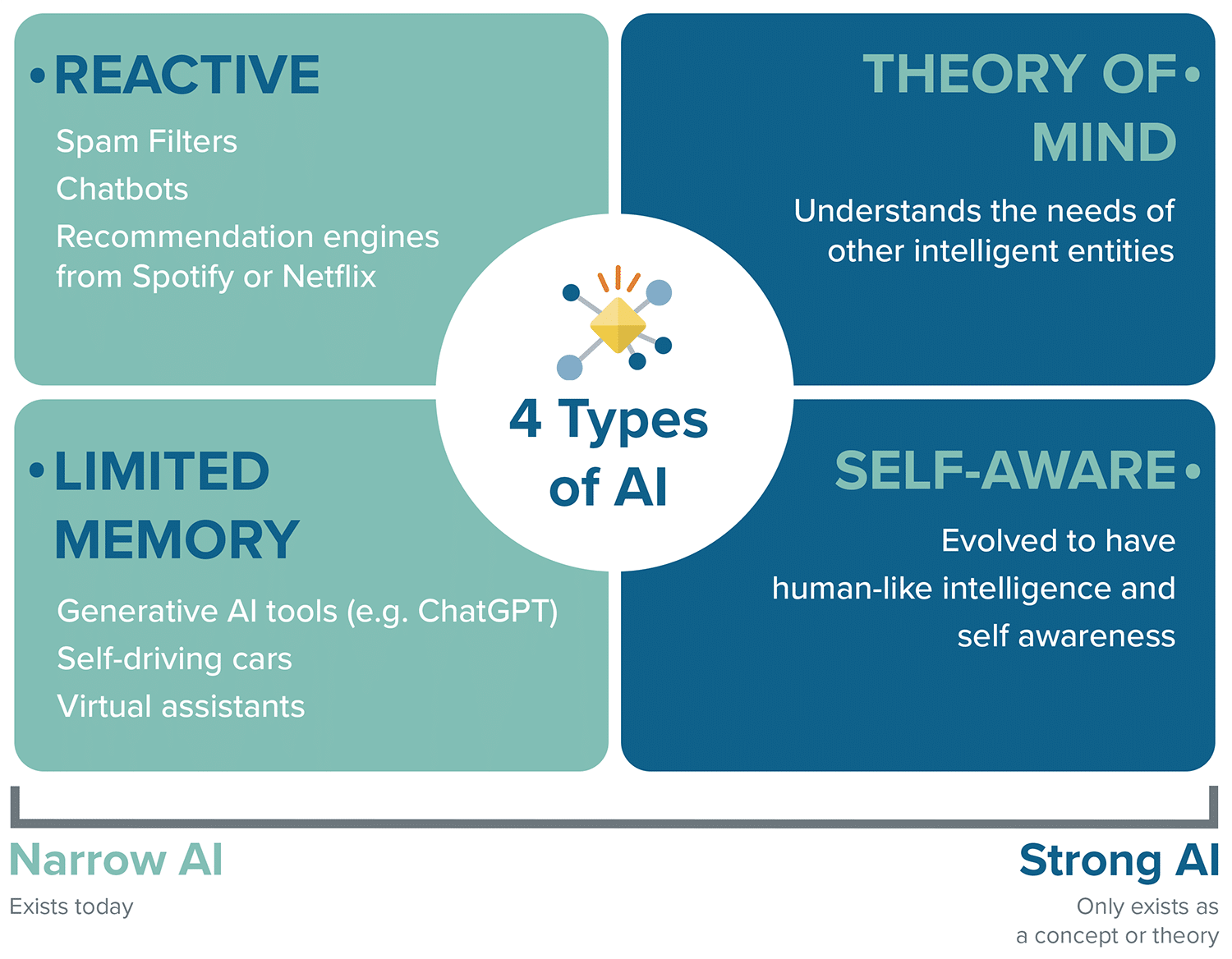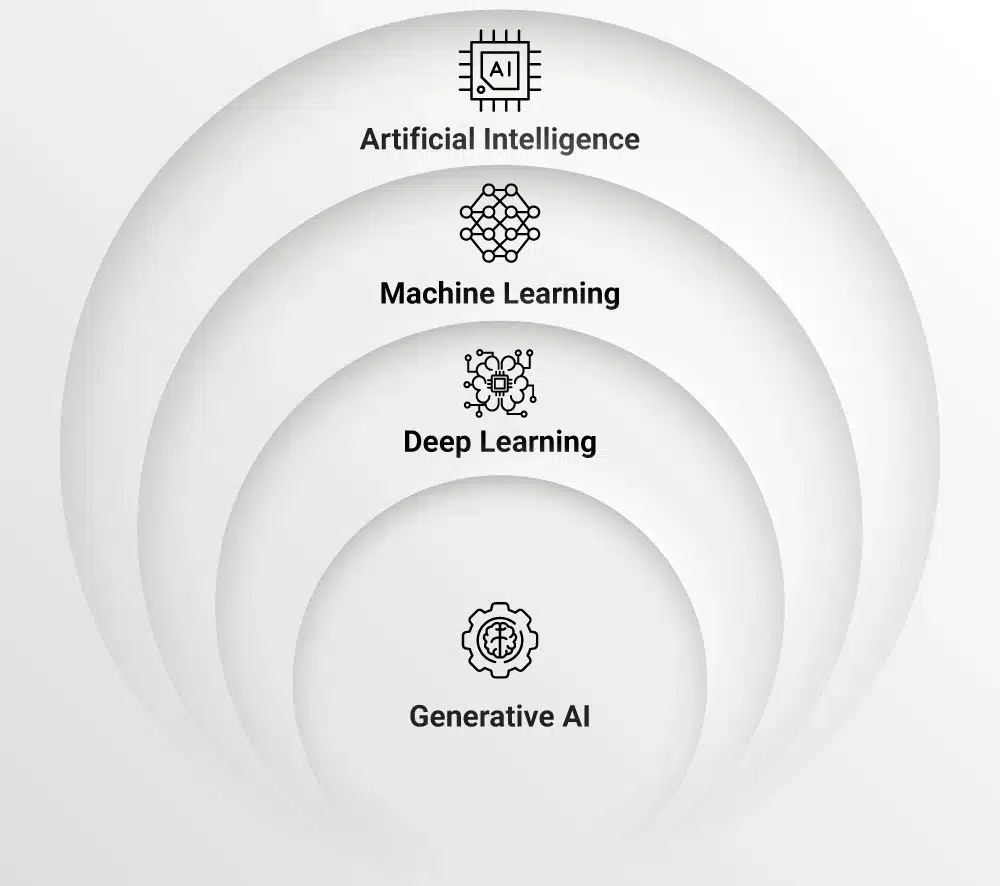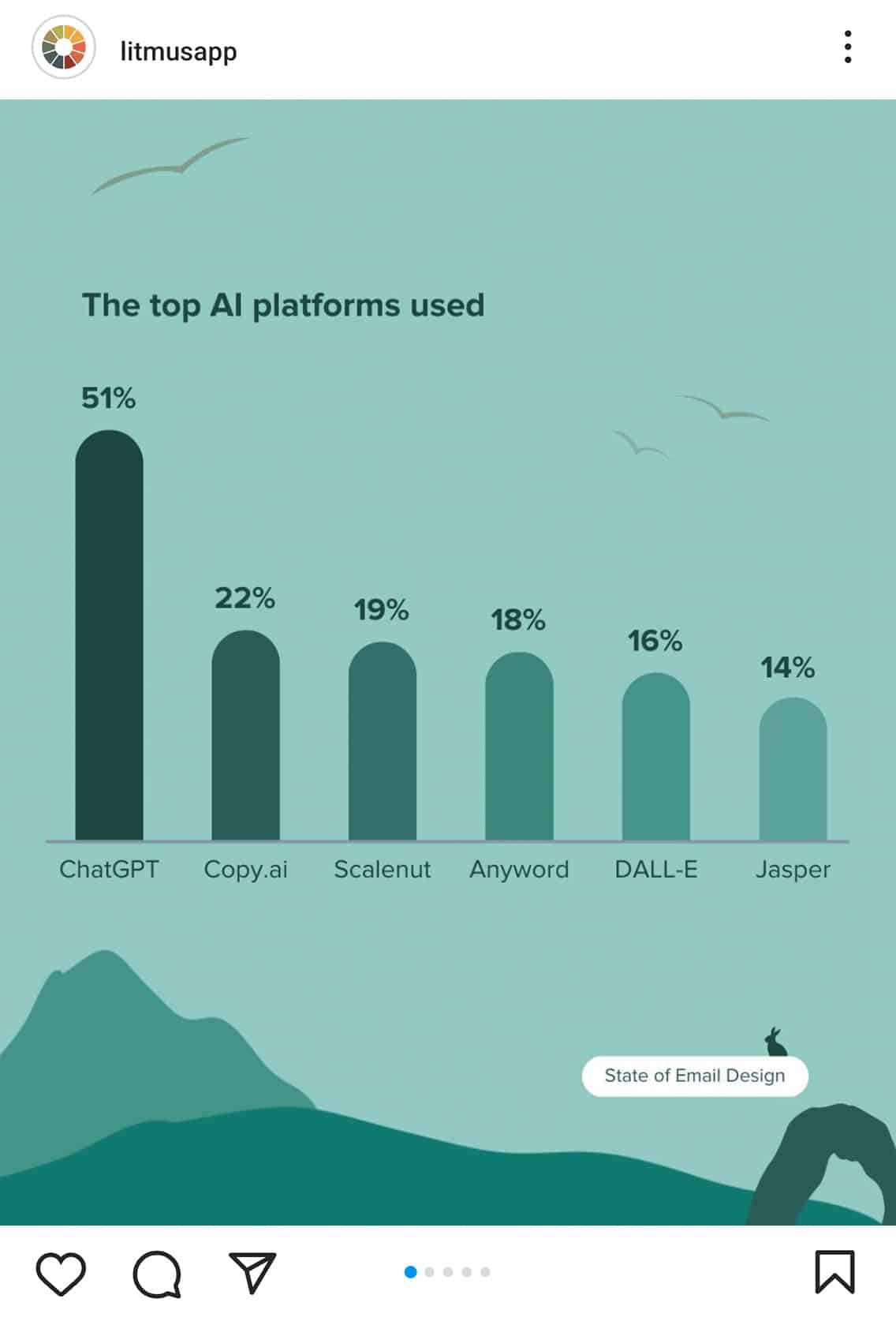The 4 Types of AI (And Which Tools Email Marketers Use the Most)
In today’s landscape, the promise and potential of artificial intelligence (AI) is top of mind for everyone—including marketers (no surprise).
Are you anything like the 39% of email marketers who are currently using AI1, or the 25% who are planning to in the future? If the answer is yes, read on to learn about:
- The stages of AI
- The four types of AI
- The various fields of AI
- Top AI tools used by email marketers
- How AI will impact email marketers
What are the stages of AI?
Before we dive into the four types of AI, it’s helpful to understand the stages of AI, based on our modern-day classification of it. Illustrated below, you’ll see narrow AI on one side of the spectrum and strong AI on the other.

Narrow AI can be thought of as AI as it exists today; our modern understanding of it. On the other hand, strong AI exists only as a concept or theory today and has yet to be achieved or realized.
Why do we being this up? It’s because the four types of AI are not created equal. The first two we’ll be discussing fall under narrow AI, with the latter two falling under strong AI.
What are the four types of AI?
AI can be categorized into four main types, based on functionality:

- Reactive
- Limited memory
- Theory of mind
- Self-aware
Only reactive and limited memory AI exist today, both of which exist under the narrow AI umbrella as mentioned earlier. Theory of mind and self-aware have yet to be achieved and exist only as concepts or theory.
Let’s take a look at each type.
Reactive
Reactive AI algorithms can respond to various inputs, but lack memory-based functionality to learn from previous encounters. (This means they lack the ability to use past experiences for decision-making.) These algorithms are one of the oldest and most basic forms of AI systems.
Examples of reactive AI today include:
- Spam filters
- Chatbots
- Recommendation engines from Spotify or Netflix
Nonetheless, reactive AI has its inherent limitations. In reality, humans have the ability to anticipate and thus prepare for the unexpected, even based on imperfect information. This shortcoming is one of the driving forces for researchers to push AI to the next level (e.g. to be capable of memory and learning).
Limited memory
The next level is limited memory AI. It encompasses the capabilities of reactive AI with the added ability to temporarily store data from past experiences, allowing it to leverage historical data for decision making.
Limited memory AI is what powers a wide array of contemporary AI applications. This includes:
- Generative AI tools (e.g. ChatGPT)
- Self-driving cars
- Virtual assistants
Now onto the more theoretical types: theory of mind and self aware.
Theory of mind
Theory of mind AI refers to the capability of algorithms to attribute mental states to the entities they interact with. It has yet to be fully developed, but is paving the way for emotionally intelligent robots that resemble humans in conversation. These AI systems will make decisions based on understanding and remembering emotions, adapting their behavior accordingly during interactions.
However, the road is challenging due to the complexity of human communication, where behavior quickly adapts to shifting emotions. Despite these obstacles, progress is being made. Notable examples include:
- Professor Cynthia Breazeal’s social robot Kismet, capable of mimicking and responding to human emotions
- Hanson Robotics’ human-like robot Sophia, which can identify faces and respond with its own facial expressions
One of the biggest hurdles for AI is the ability to understanding and comprehend. Even AI capable of creating substantial artwork or essays often lacks genuine understanding of its creations. Attaining the theory of mind would represent a significant step towards overcoming this limitation.
Self-aware
Self-aware is the most advanced type of AI. As the name suggests, it’s an AI that has evolved to be on par with human intelligence, so much that it’s self-aware. (Think Spike Jonze’s Her.)
While it’s the ultimate goal of AI, we are decades—if not centuries—away from achieving this.
The various fields of AI: Machine learning, deep leaning, and generative AI
You’ve probably heard the following buzzwords used in association with AI—like machine learning (ML), deep learning, and generative AI. While these terms share a common thread, each field of AI has its distinct characteristics.

AI and machine learning are often used interchangeably, but they’re not the same. Machine learning is a subset of the broader AI category. And while machine learning is a subset of AI, generative AI is a subset of and machine learning, as illustrated above.
Generative AI harnesses the capabilities of machine learning to generate content based on data it has been trained on. For that reason, it falls under the limited memory AI type. It powers some of the most popular tools used by marketers today.
What are the top generative AI tools used by email marketers?
So—which generative AI tools are most popular among email marketers? Our survey for the State of Email Design report found copy creation tools to be more popular than image-only tools, with the conversational model of ChatGPT appealing to most email marketers.

- ChatGPT: 51%
- Copy.ai: 22%
- Scalenut: 19%
- Anyword: 18%
- DALLE-2: 16%
- Jasper: 14%
As previously mentioned, only two types of AI exist today: reactive and limited memory AI. That means that the AI tools and platforms being used today are either reactive, limited memory, or both.
For example, chatbots can be considered both reactive and limited memory AI. Rule-based chatbots, with predefined responses, represent reactive AI because of their structured nature. In contrast, machine learning chatbots fall under limited memory AI, improving with time but constrained by memory as they draw from past data and interactions to respond to customers.
What’s next? How AI will impact email marketers
As noted earlier, copy creation is the most popular use of generative AI. But while email copy is evidently an important aspect of email marketing, it’s not necessarily where or how email marketers spend most of their time.
While content creation came at a close second, our 2023 State of Email Workflows Report found collecting feedback to be the biggest obstacle/bottleneck in email production cycles.

This leads us to one of our most pressing questions around AI: can AI help with collecting feedback? Considering the apprehension around AI-generated copy, it may add more to email marketer’s plates.
And in order to ensure an email is pixel-perfect and ready for deployment, a human still always needs to give final approval. (A tool that collects all feedback in one place like Litmus Proof could be of great help here, though… just saying. 😀)
For further reading, head over to Can AI Simplify the Email Workflow? →
1Source: Litmus’ 2023 State of Email Design. 39% was calculated by taking the sum of survey respondents who said “Yes, we use AI to aid in brainstorming” (18%), “We use AI to write email copy” (10%), “We use AI to write subject lines” (9%), and “We use AI for image creation” (2%).

Kimberly Huang
Kimberly Huang is a Content Marketing Manager at Litmus
